BRICS Summit: History and Main Events
The BRICS Summit is an annual meeting of the Heads of State or Government of the five nations of BRICS - Brazil, Russia, India, China, and South Africa. Such summits represent the highest level of inter-state exchange on issues pertaining to the development of the world and have become an important occasion in economic, political, and social cooperation among the states that are participants of the organization.
1. The First BRICS Summit (2009) – Yekaterinburg, Russia
BRICS summits
The first ever official BRICS summit came into being in Yekaterinburg, Russia in June 2009. That was actually the first time that the leaders of the BRICS countries formally met and was initiated to hold summits annually.
Key Focus: The summit discussed the global financial crisis of 2008 and reforms of international financial institutions, such as the IMF and World Bank, so that these bodies may finally reflect the weight of emerging economies in global economic governance.
2. Second BRICS Summit, 2010 – Brasília, Brazil
In 2010, Brazil hosted the second BRICS summit on April 2010.
This focus would therefore be on economies of cooperation and financial reform on a global scale, but within these broad discussions on security in the world, climate change, and all-around development of additional trade and investment relations by the BRICS countries.
3. Third BRICS Summit (2011) – Sanya, China
China hosted the third summit on April 2011.
Thematic Priority: The summit was opened to the creation of the BRICS New Development Bank (NDB), a decision to set up a multilateral development bank to fund infrastructural and development projects. This is partially as a way of encouraging change in financial systems dominated by the West.
4. Fourth BRICS Summit (2012) – New Delhi, India
India was the destination country of the fourth summit that was held in March 2012.
Thematic Focus: The key theme was of sustainable development, energy security, and climate change. The leaders also decided on the formation of the BRICS Business Council to enhance the economic as well as business relations.
5. Fifth BRICS Summit (2013) – Durban, South Africa
The fifth summit was hosted by South Africa in March 2013
becoming the first time that the group of BRIC had allowed South Africa to be an integral part of the group.
Top Agenda The agenda of the summit included discussions on economic development, Africa's growth, and closer South-South cooperation. Another achievement included the formal establishment of the BRICS New Development Bank (NDB).
6. Sixth BRICS Summit 2014 - Fortaleza, Brazil
The sixth summit was convened during the July 2014 calendar in the state of Brazil.
Key Focus: The BRICS Contingent Reserve Arrangement (CRA) was launched-a multilateral reserve pool to protect oneself against financial shocks or crisis. Leaders also decided on deeper cooperation between BRICS in trade, security, and investment.
7. Seventh BRICS Summit (2015) - Ufa, Russia
It was held by Russia in July 2015
Key Focus: Regional Security and cooperation at the global governance level. The group also discussed the role of the BRICS New Development Bank (NDB) and strengthening cooperation in the energy secto
8. Eighth BRICS Summit (2016) – Goa, India
India will host the eighth summit in October 2016.
Key Focus: The focus was on inclusive growth, operations against terrorism, and regional security, with special attention to the Indo-Pacific region and the South China Sea.
9. BRICS Ninth Summit (2017) – Xiamen, China
In September 2017, the summit was hosted by China.
It discussed largely world trade, innovation, and cooperation in technologies. They welcomed the BRICS Partnership on New Industrial Revolution (PNIR) aimed at promoting digital economy as well as industrial revolution 4.0.
- Thematic focus areas : Trade and investment cooperation, sustainable development, and deepening the BRICS partnership with Africa. The summit highlighted the importance of multilateralism and the need for change in the global governance framework.
10. Tenth BRICS Summit (2018) – Johannesburg, South Africa
The Summit was held in July 2018 in South Africa.
Key Focus: Cooperation in trade and investment, sustainable development, and strengthening cooperation with Africa within the BRICS framework. It positioned the summit as one that reiterated the importance of multilateralism and further underlined the imperative to reform the governance of global processes.
11. The eleventh BRICS Summit, 2019-Brazil, Brasília
It took place with Brazil as the chair in November 2019.
Key Focus: The summit concentrated on economic growth, trade agreements, and the role of BRICS in global governance in global issues like climate change and counterterrorism. The leaders reaffirmed the commitment to a reformed global trade system.
12. Twelfth BRICS Summit (2020) – Virtual (COVID-19 Pandemic)
The summit took place virtually in December 2020 with Russia as its chair.
High on the agenda was the gloabal response to COVID-19, economic revival, and digitalisation. It was demanded that there be an international cooperation on vaccine distribution, economic stimulus packages, and strengthening the multilateral trading system.
13. Thirteenth BRICS Summit (2021) – Virtual
The summit, as usual in the past years, was held virtually in December 2021, with India hosting the summit that year.
- Key Priority Focus: Post-pandemic recovery, climate change, Renewable energy and inclusive growth
.
14. Fourteenth BRICS Summit ( 2022) – Beijing, China (Virtual)
Held virtually by China in 2022
Key Focus: Those considered for reforms in global institutions, strong financial cooperation, multilateral relations with trade and broadening its influence concerning global health and digital transformation.
15. fifthent BRICS Summit (2023) – Johannesburg, South Africa
The 15th summit was held in South Africa in August 2023.
Key Discussion Points: Expanding BRICS and future cooperation on reforming the new global governance and economic cooperation. Questions were raised regarding de-dollarization and the expansion of trade in local currencies.
Economic Gains and Profits of BRICS
BRICS as an entity has taken giant steps to become an economic cooperative force with collective bargaining in international forums. The economic advantages of the BRICS group can be formulated into the following points:
1. Market access and trade growth:
- The BRICS countries account for the majority of international trade. Harmonization of trade policies effectively opens up the market for all the BRICS countries and reduces trade barriers.
The BRICS countries have encouraged trade diversification as they strengthened their currencies in international transactions and are promoting their use in international transactions.
2. Investment and Infrastructure:
The New Development Bank (NDB) has allowed BRICS to present an opportunity for financing mega-infrastructure projects, especially in the developing world, and there is a direct economic benefit through enhanced infrastructural components such as energy, transportation, and telecommunications.
The Contingent Reserve Arrangement (CRA) empowers BRICS countries to prepare contingency measures to regulate financial volatility and attacks on currencies through access to immediate liquidity.
3. Alternative to Western Financial Institutions:
NDB and CRA are institutions that are helping the BRICS countries, in their collective efforts, to build a financial system which is less dependent on IMF and World Bank institutions that are preponderantly dominated by the West. It is critically important for global South as these institutions offer alternative access to financial capital not tangled with conditionalities regarding loans provided by Western institutions.
4. Joint Research and Technology:
BRICS countries have collaborated on areas such as science and technology, healthcare, and green energy. Utilizing concerted resources and know-how, it has targeted solving global issues-global warming, poverty, health crises, including distribution of COVID-19 vaccines.
5. De-dollarization Drive:
BRICS countries have been studying ways to reduce dependence on the dollar, which is the internal currency they are going to use between themselves for exchange. In the long term, this was also seen as economically positive for maintaining the economic independence of BRICS countries.
6. Cultural and Education Exchange:
There is cultural exchange and cooperation in terms of education among member states that can further strengthen bonds and understanding.
Conclusion
Expansion and Future Prospect of BRICS
But within the last few years, the interest towards the expansion of BRICS has mounted. Countries like Argentina, Indonesia, Turkey, and Egypt have shown keen interest with BRICS membership. In fact, at the 2023 Johannesburg Summit, discussions on the expanded membership are under discussion. An expanded BRICS would be a more pronounced influence in the world affairs, especially in Africa, the Middle East, and Asia.
Areas of Future Concentration:
1. Reform global governance: Continue to strive for the reform of international institutions (UN Security Council, IMF, World Bank) for more balanced representation of emerging economies' voices.
2. Economic Cooperation: Strengthening of financial institutions in the NDB, and much more projects that can be undertaken immediately in the best interest of member countries, especially infrastructure and technology issues.
3. Geopolitical Impact: BRICS increasingly is looking for an alternative to the US-led West, toward multipolarity in world politics, mainly in Africa, Asia, and Latin America.

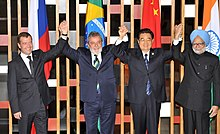


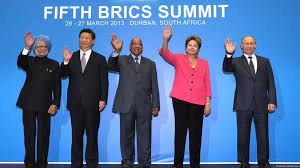



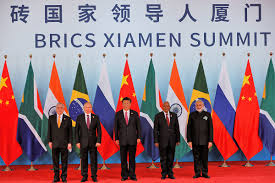
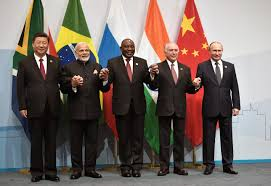




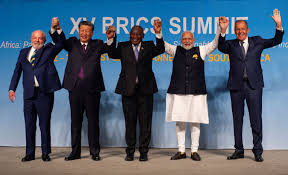









No comments:
Post a Comment